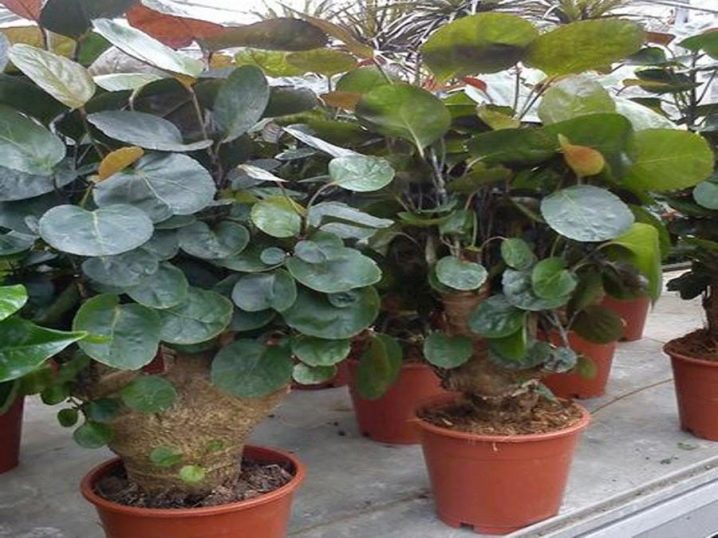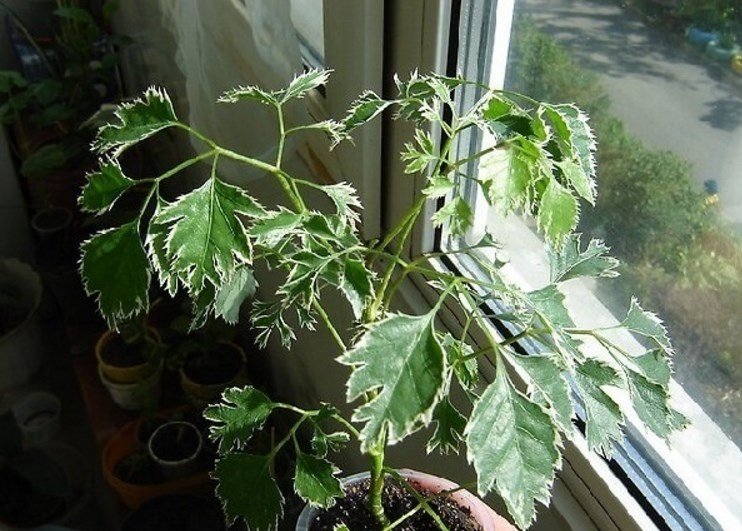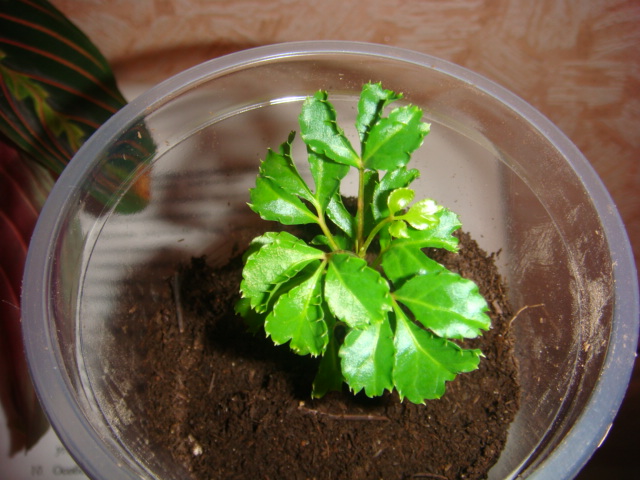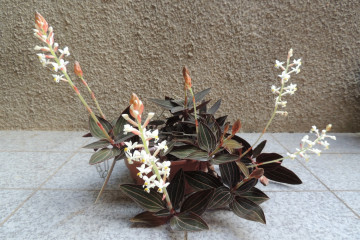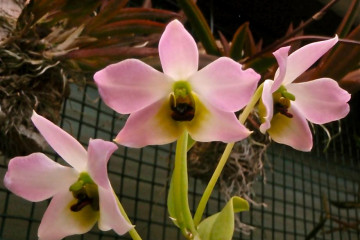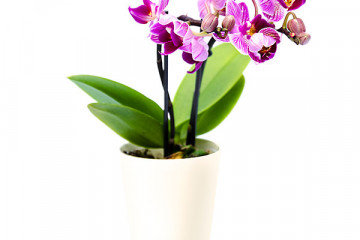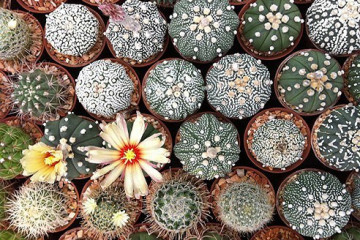Poliscias Fabian: growing conditions and home care options
The poliscias plant is native to the distant forests of Madagascar and the humid tropics of Asia. He can reach a very impressive height, and then he is placed in a greenhouse. However, some representatives of this Araliev family look like a medium-sized shrub and feel wonderful on the windowsills in an apartment or a private house. Small poliscias species are ideal for bonsai formation.
Polisias Fabian (helmet-shaped) - the owner of spectacular dark green leaves with a purple tint. No less impressive is its imposing stiff trunk. Plant height can vary from 50 cm to one and a half meters. It may well decorate a spacious hall, if you exclude sudden changes in temperature and drafts.
Main types
Of greatest interest are the following varieties:
- Polisias Balfour is an unusual plant that is valued by flower growers for its special decorative effect. Unlike Poliscias Fabian, the growth of this wonderful shrub does not exceed 50 cm. The leaves of this representative of the Aralievs have a rounded shape, pronounced lobulation. The color of the leaves is saturated with pale green or white streaks and edging. With age, the dissection into lobes increases, which adds decorative effect to the flower. Unfortunately, flowers do not appear in home breeding conditions;
- polisias Robl Vertakt is an evergreen shrub-like plant that can grow up to 150 cm in height, although in a greenhouse or at home, average specimens not exceeding 70-80 cm are most often found. The leaves of this wonderful plant are lobed, resembling geranium leaves;
- Guilfoil under favorable conditions can easily turn into a three-meter giant, which is why he is a frequenter of winter gardens and spacious halls. The plant branches well. Light green toothed leaves are bordered by a white or yellow stripe;
- poliscias shrub - a flower that has a lush light green crown. Leaves are lanceolate, unevenly serrated. The branches have a light brown, dense bark;
- Poliscias fern is a very showy plant with heavily dissected pale green leaves. The flower is easily confused with a fern. The length of the branch can be up to 50 cm;
- Poliscias Balfouriana is a plant that resembles a tree rather than a flower. It has a thick trunk with bark reminiscent of woody. The leaves are dark green with a white border around the edge. Lovers of miniature trees use it as a bonsai;
- Poliscias curly is a bushy miniature plant, the leaves are painted in a rich green color. In rare cases, specimens with bordered leaves come across;
- the dull-leaved polisias is a wonderful representative of the Araliev family. It attracts flower growers with its glossy dark emerald leaves, vaguely reminiscent of oak leaves. This policeman, if home care is correct, can grow up to one and a half meters in height.
Polisias: home care
If there is a desire to acquire this unusual representative of the Araliev family, then the most optimal would be to grow it from a cuttings. But, if this is not possible, you need to choose a young flower no higher than 30 cm in height. This is due to the fact that it is rather difficult for the policeman to transfer movement from one place to another and the process of acclimatization.
Poliscias Fabian is not the easiest indoor flower to cultivate.He is very picky about consecration, preferring bright, but diffused light. The best habitat for a plant will be a window facing west or east. In the summer it must be shaded, and in the winter it must be provided with additional lighting. Some growers use phytolamps for this.
To make the capricious poliscias flower feel comfortable, you need to take a responsible attitude to the choice of soil mixture. For this shrub-like plant, you need to choose a light soil with good air permeability. A universal soil is also quite suitable, but you just need to add pebbles or small shards to it. You can prepare a dredge for the police yourself. To do this, it is necessary to take in equal parts humus, peat, turf soil and sand and mix thoroughly.
Poliscias Fabian does not require frequent hydration. It will be enough to water it as the surface layer of the soil dries up. Water for irrigation should be taken soft or rainwater. Chlorine in the water for irrigation can harm the plant.
Top dressing and fertilization of the policeman is carried out once every 15 days during the active growing season. A common deciduous fertilizer is fine for this. In the winter months, the flower does not need feeding.
Diseases and pests
Like any houseplant, poliscias can suffer from both diseases and pests. If the flower has dropped its leaves, then you need to immediately take measures to save it. This phenomenon is most likely caused by the following:
- dry air;
- violation of the irrigation regime;
- moving the flower to another location.
If the variegated representative of the Araliev family suddenly turned white, this means that the plant suffers from an excess of light, and, on the contrary, the loss of variegation is a sign of its lack. If the flower has slowed down its growth, then, most likely, it lacks nutrients.
Pests can also bother this houseplant. The scabbard that attacked the stems and leaves may not be noticed at first, since its shell looks like a piece of bark. The spider mite also goes unnoticed for a long time.
Reproduction of the polisias
Reproduction of the poliscias can be done in several ways:
- cuttings;
- seeds;
- part of the rhizome.
Cutting is not the easiest way to propagate this plant. If the conditions are not ideal, the cuttings are unlikely to take root. What should you do? In the spring, prepare cuttings about 15 cm long by taking the top of the plant. The lower leaves must be removed, then the sections must be treated with phytohormone. If such a drug is not at hand, you can use charcoal. Next, you need to place the stalk in a container filled with a mixture of peat and sand, and cover with foil. The optimum temperature for rooting is 25-26 ° C.
You can try to grow Poliscias Fabian from seeds. Since the plant does not bloom at home, the planting material will have to be purchased at an agricultural supermarket. The seeds are placed in a container with nutritious soil mixture and covered with foil, thereby creating a greenhouse environment. As soon as the first shoots appear, the container should be moved to the source of diffused light, removing the film. The growing plants are planted in individual pots when the seedlings are sufficiently strong.
To propagate Poliscias Fabian using rhizomes, you need to carefully divide the roots of an adult plant into fragments of about 3 cm.Having processed the cut site with phytohormone, you need to carefully plant the cuttings. Covering with a film is not required. This method of reproduction involves planting plants directly into individual pots, which should be continued to care for as adult plants.
The policeman himself and caring for him is not an easy task. This is a flower that requires constant attention. Most likely, he will never please with lush flowering. But you should not despair, since the unusual and extremely decorative foliage of this wonderful plant can decorate the windowsill or home greenhouse of the most discerning breeder.
